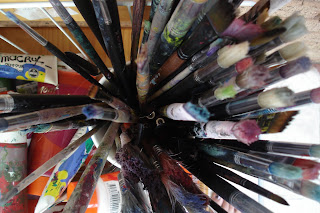
The acrylic painting medium is a fairly new addition to the various painting mediums available to todays artists. It has been around since the 1950's and has been continually under development and refinement ever since.
Acrylic paint is highly favored amongst artists because of its wonderful versatility. It can be applied thickly as an impasto having rich texture or in washes mimicking the characteristics of watercolor.
Another likable characteristic of acrylic paint is its permanence. Acrylic paint is not susceptible to yellowing or hardening with age. With acrylic paint, the artist does not need to be concerned with the order the paint is applied or other special techniques that ensure the paint film remains free from cracking. So it can be said that acrylic paint is much easier to use than oil paint.
Yet another characteristic that invites new artists to this medium is its fast drying time. Since acrylic paint dries so quickly, colors can be applied and overlaid quicker than with oil painting.
There are however a few downsides to the quick drying time of acrylic paints:
1) The paint will not remain workable for very long, so you have to work quickly.
2) The fast drying time of acrylics can also ruin brushes if the brushes are not cleaned immediately.
3) Acrylic paint is not the best medium for direct painting outdoors, especially on a bright sunny day. Whatever paint you put out on your palette will begin to dry quickly and form a skin over the surface of the paint making it very difficult to work with.
ACRYLIC PAINTING TECHNIQUES
Blending Opaque Colors
With watercolor effects, the acrylic paint is applied in transparent washes. With the opaque technique the paint layers are non-transparent. Blending opaque acrylic colors can be a bit tricky as you are kind of pressed for time. It is important therefore to only work on areas that you know you will have enough time to blend. To blend two colors, first paint a block of each color side by side on your support. Where the two colors join paint down that line with a clean damp brush to soften the edges. To blend the colors even further, move the blending brush from side to side or up and down, until the desired blending is achieved.
Sgraffito Technique
Sgraffito is a scratching technique. It got its name from the Italian word “graffiare” which literally means “to scratch”. Just as the name implies it involves scratching into the surface of the wet paint which reveals either the ground or layer of dry color underneath. There are a number of different tools that can be used for this technique. Tools like screwdrivers or the sharpened end of an old paintbrush handle should suffice. It really depends on the support you are using. For instance, a screwdriver may not be the best tool if you are using a panel as a support. The hard metal may damage the panel, so you would need to use a softer tool.
Using a Squeegee
A regular squeegee that you can purchase at any hardware or auto store can create some interesting effects when used with acrylic paint. First you would squeeze out some paint blobs directly along one edge of your support. You can layout whatever colors you wish. Then with one fluid motion you would drag the paint across the support with your squeegee, which will smear and mix the paint and create some very unique and interesting designs. You may need to alter your squeegee a bit as the rubber blade that comes with most squeegees may not be rigid enough to drag the paint. You can remove the rubber blade and in its place glue in a regular wooden ruler. This will give you a flat sturdy edge to manipulate the paint.
I hope you have enjoyed these tips. Take some time today to experiment with these techniques and have fun. Happy Painting!
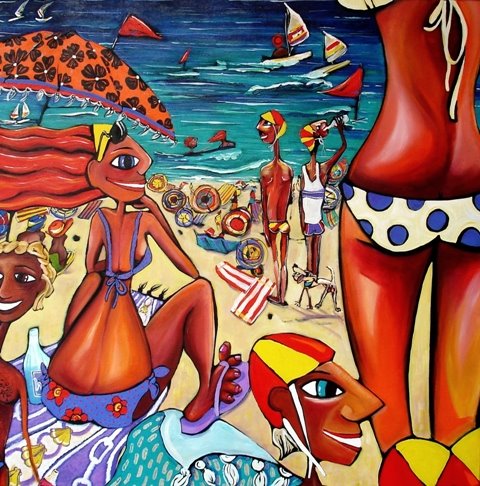
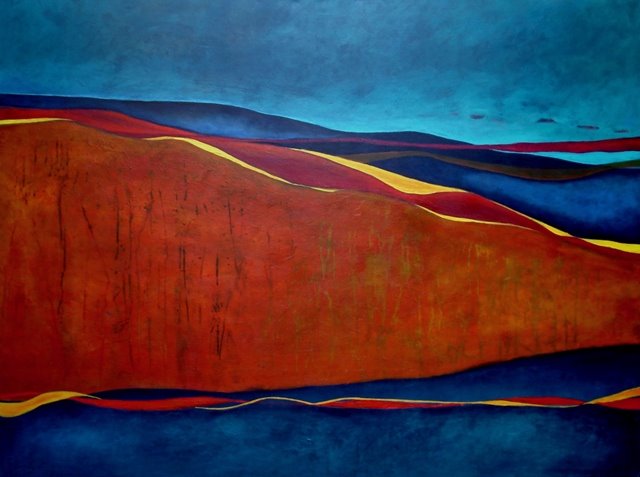
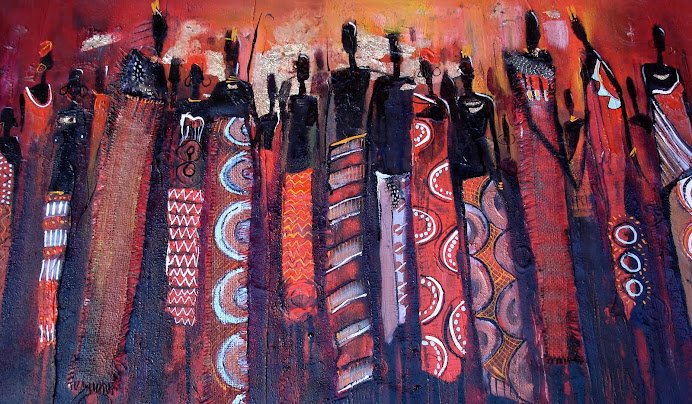
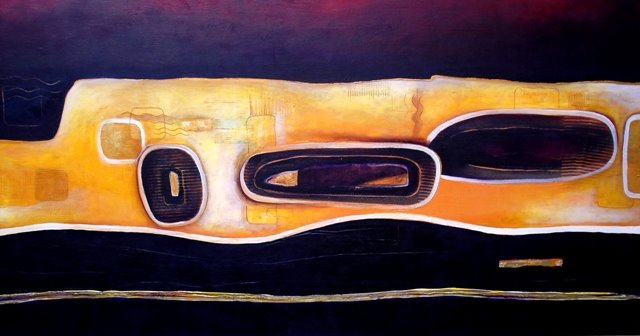
No comments:
Post a Comment